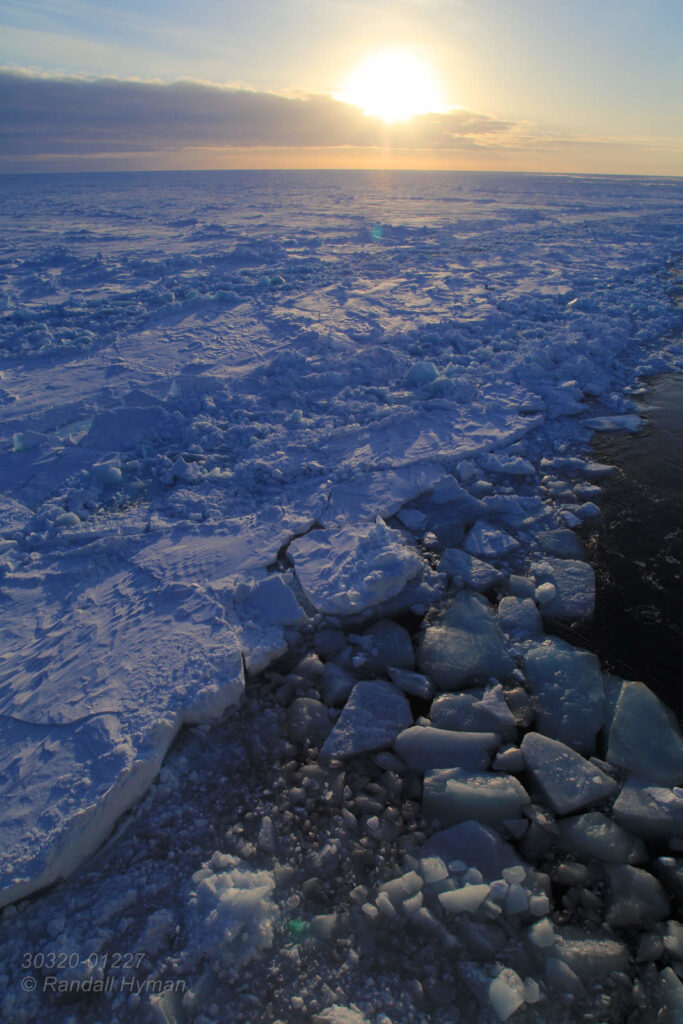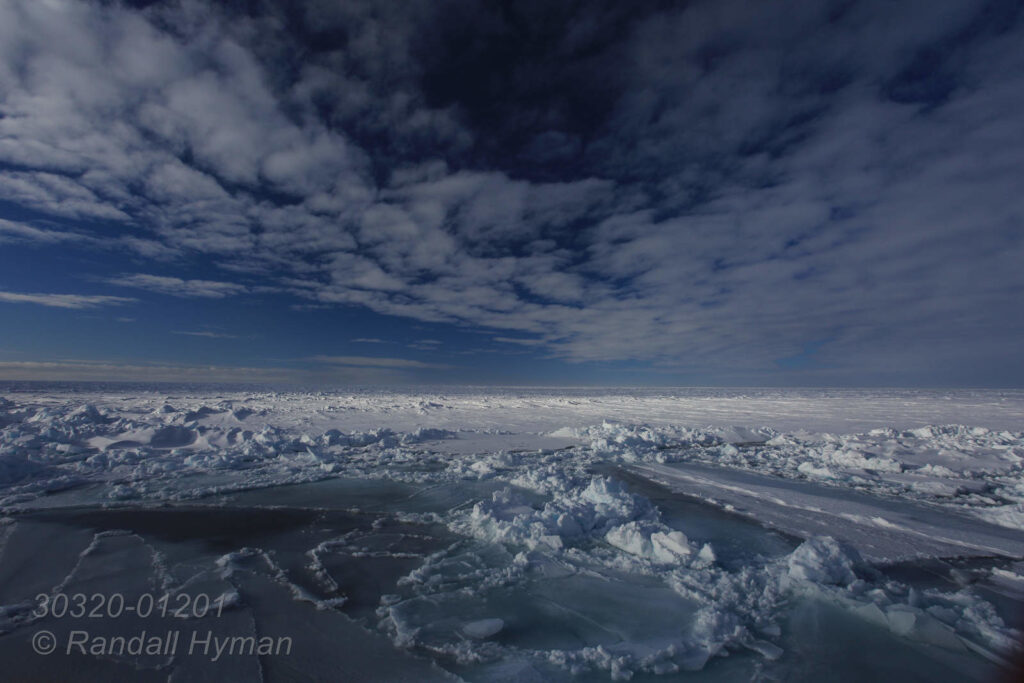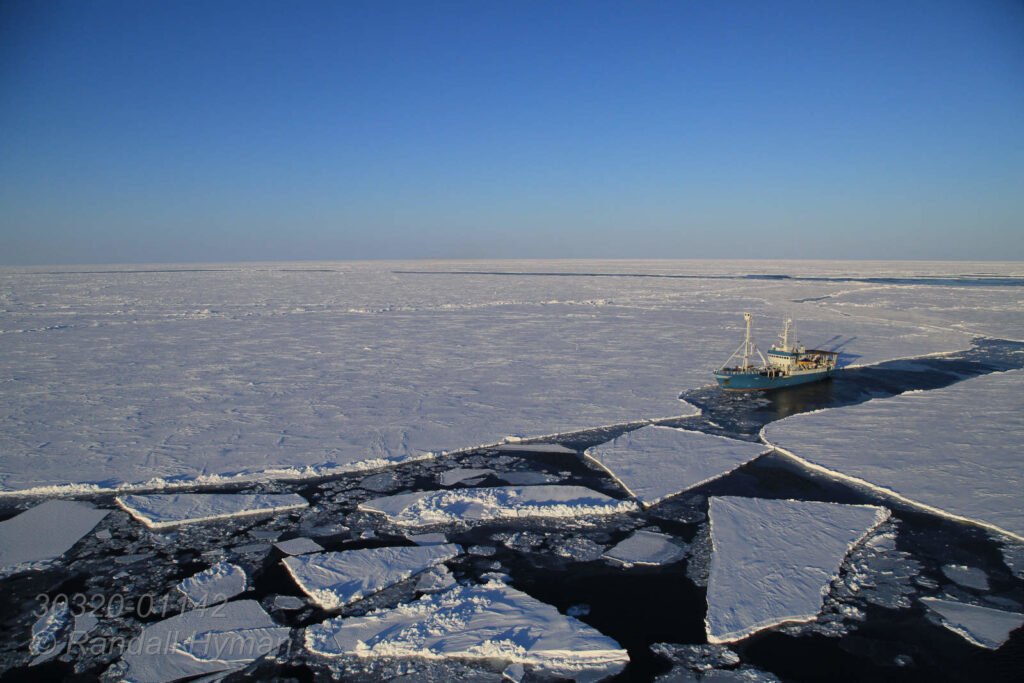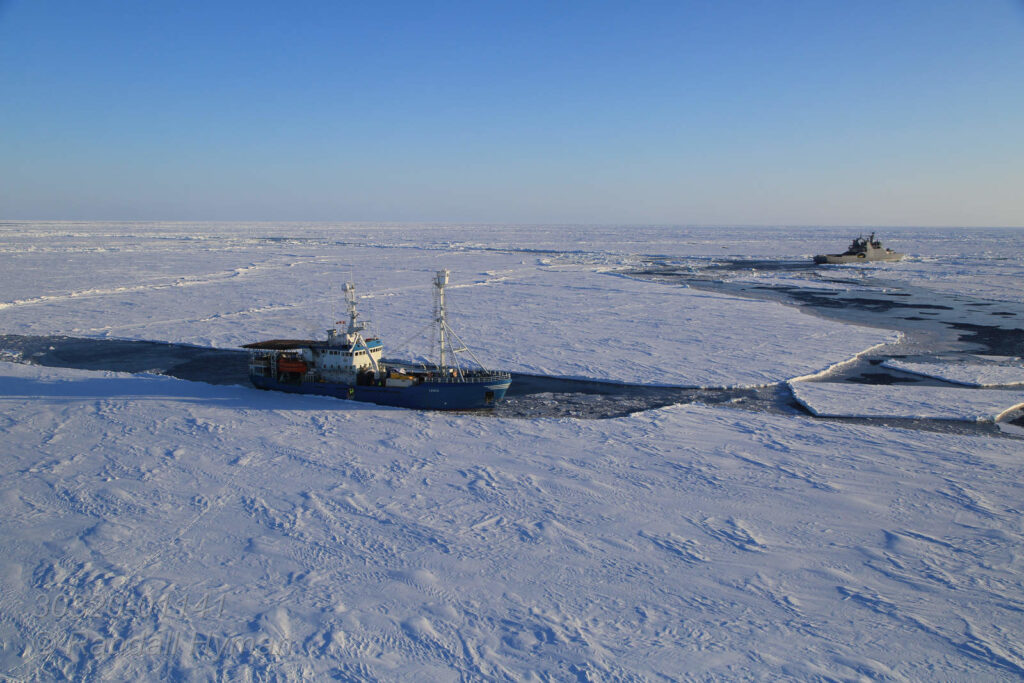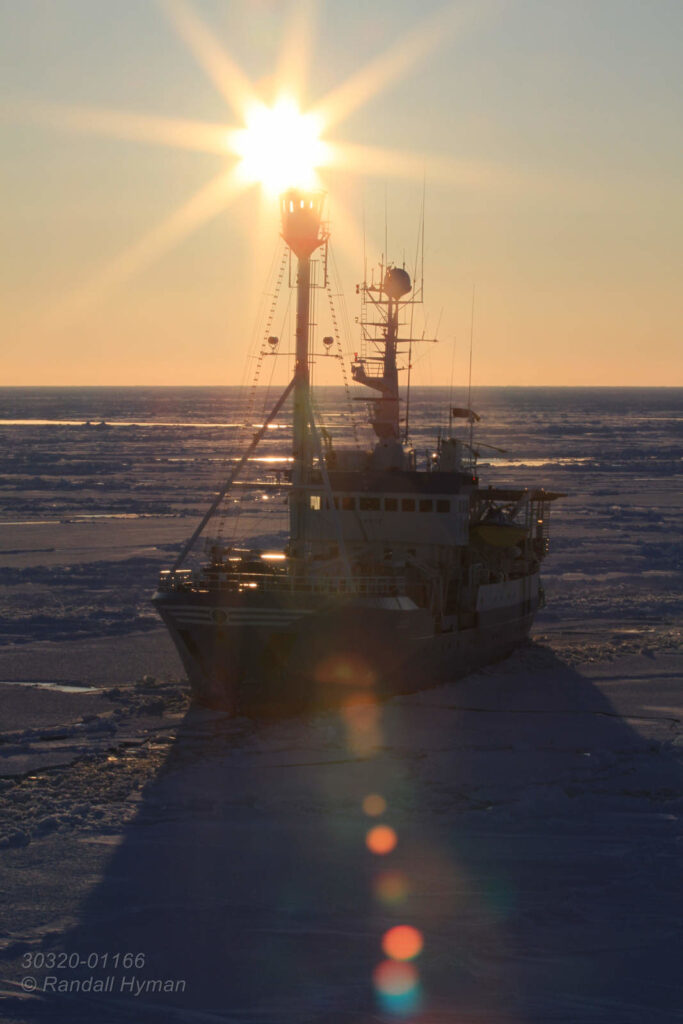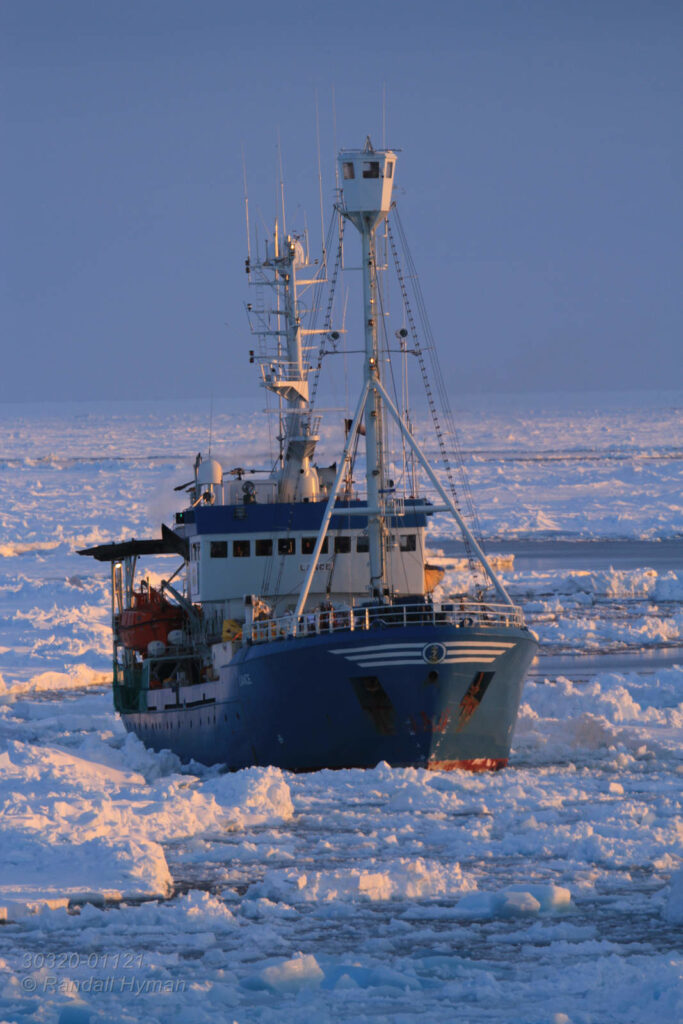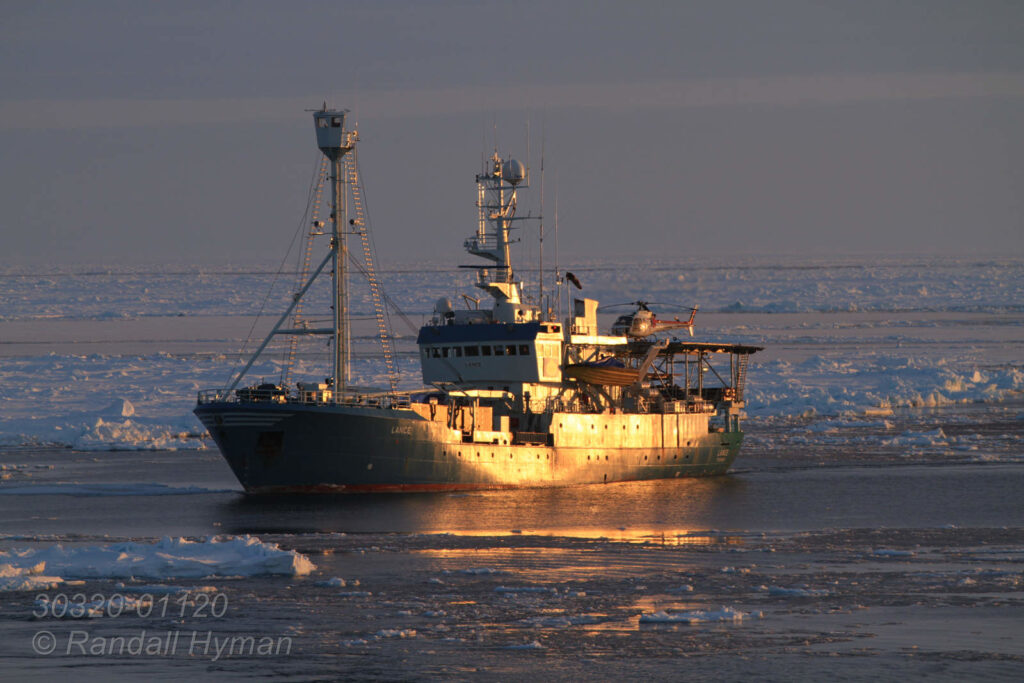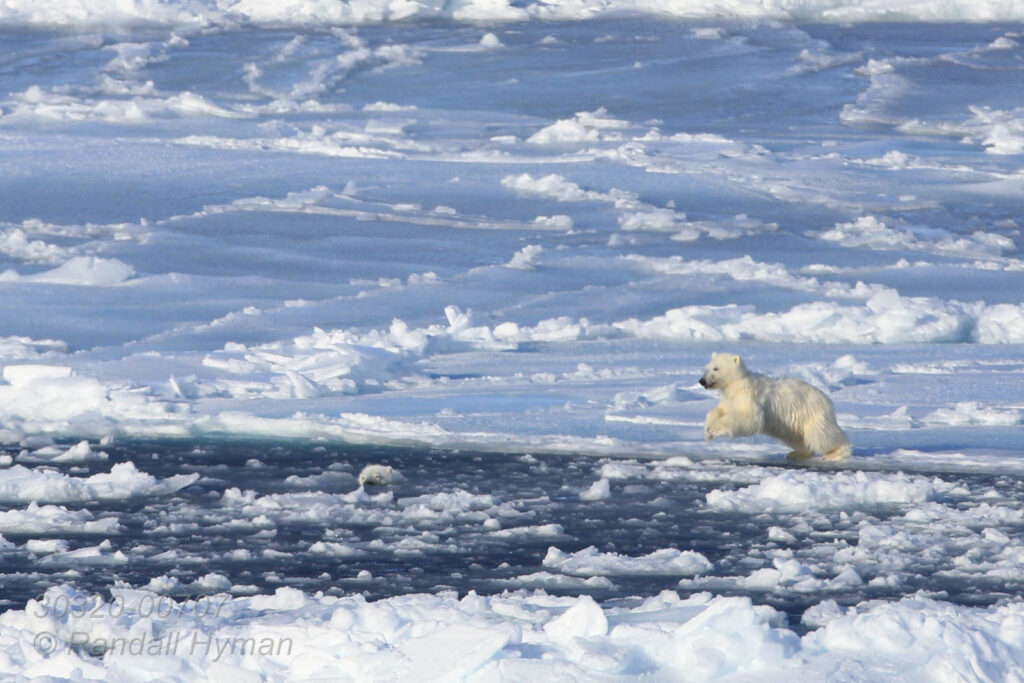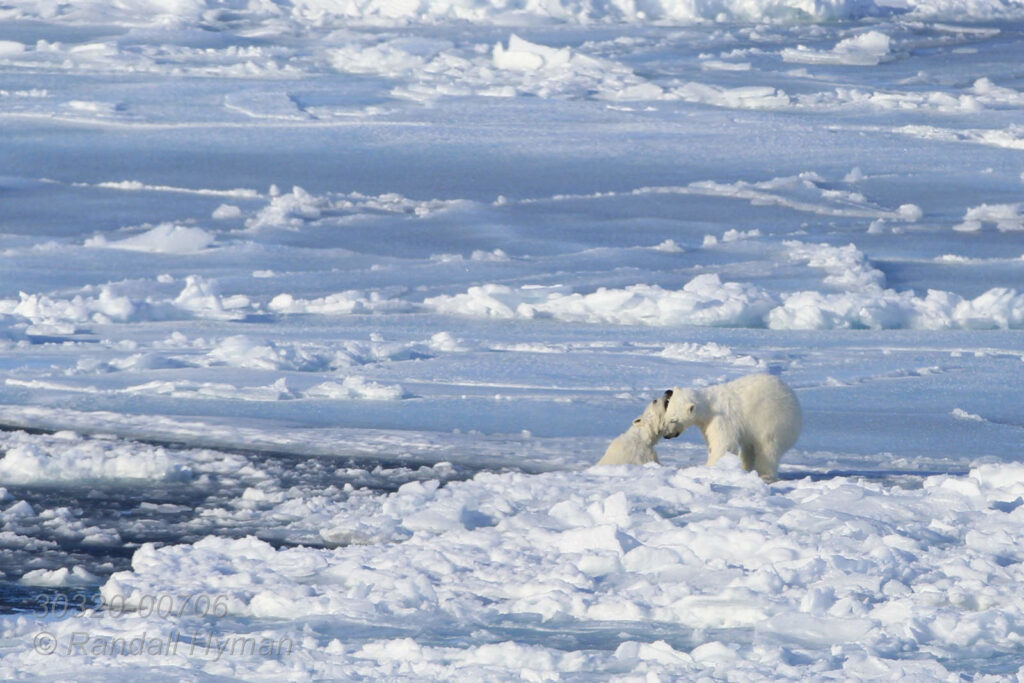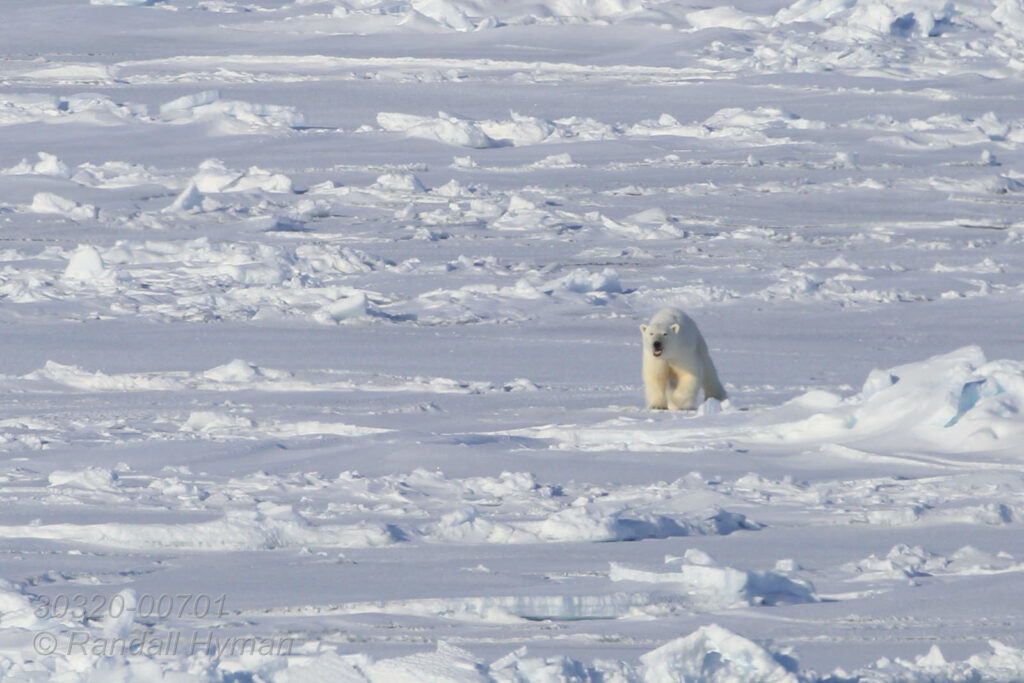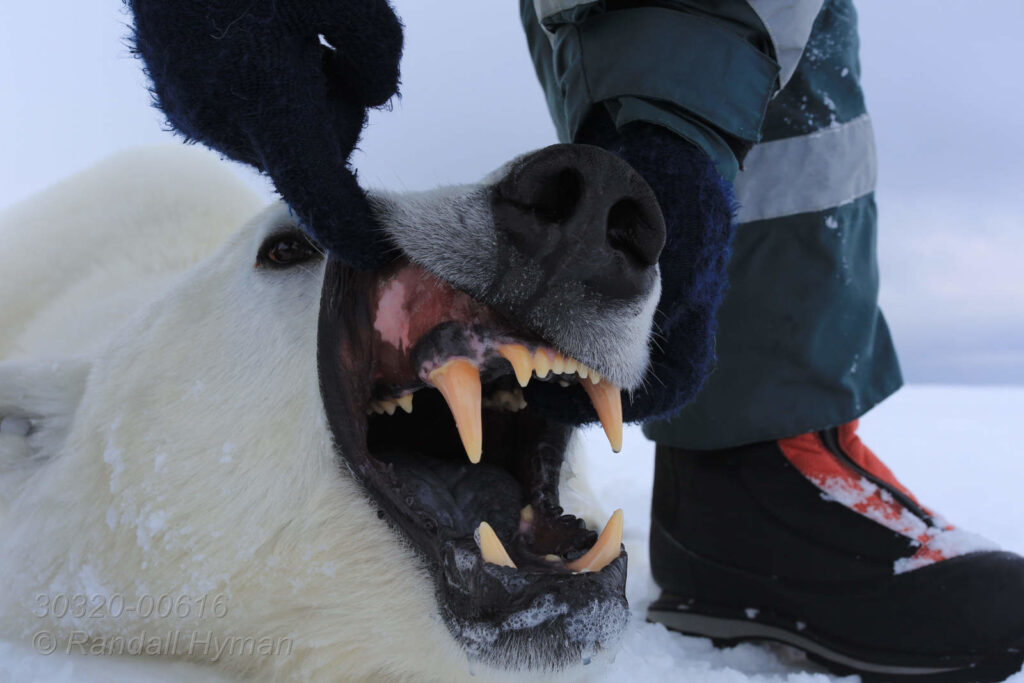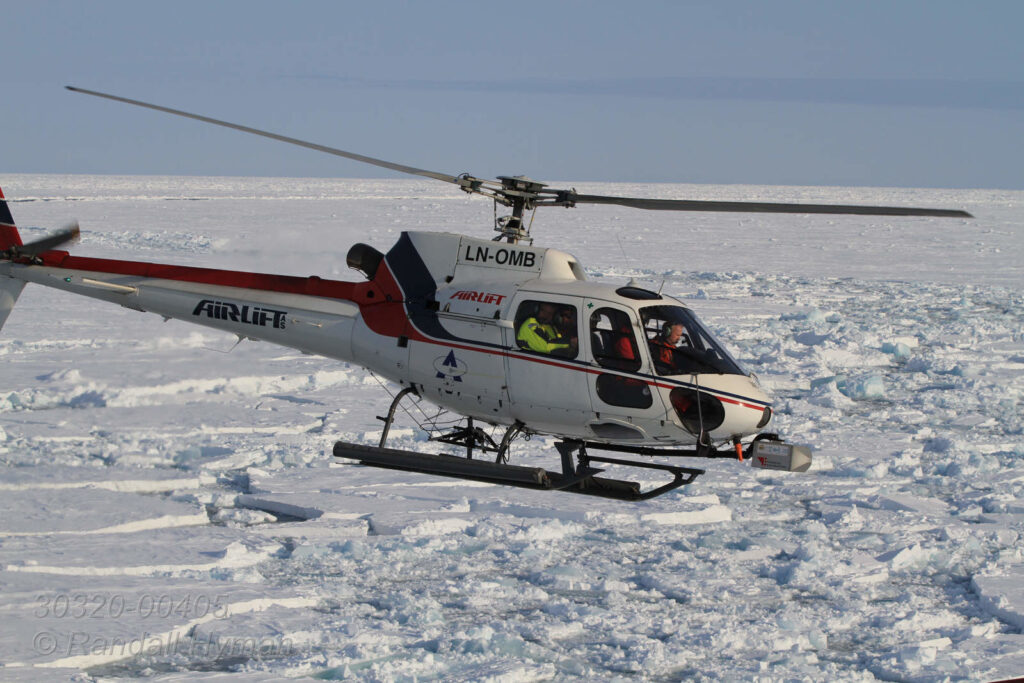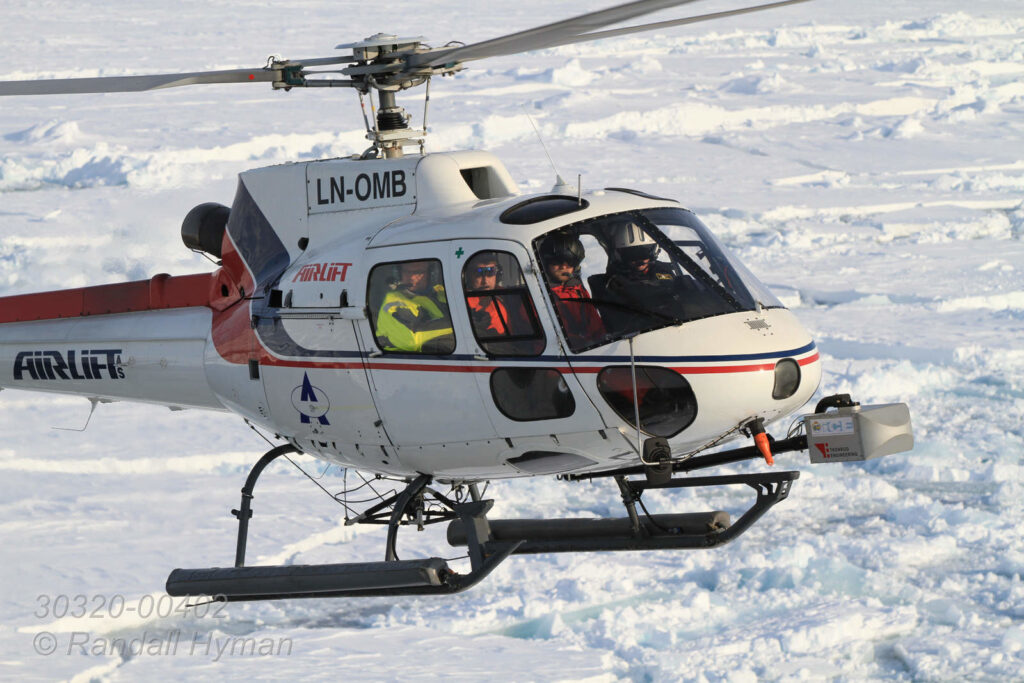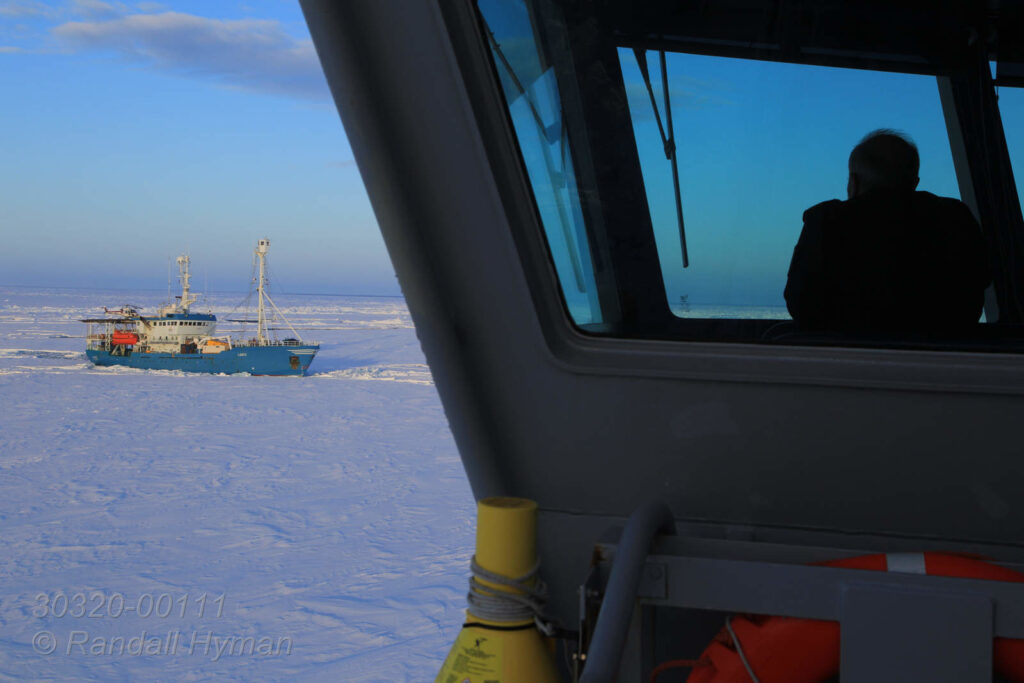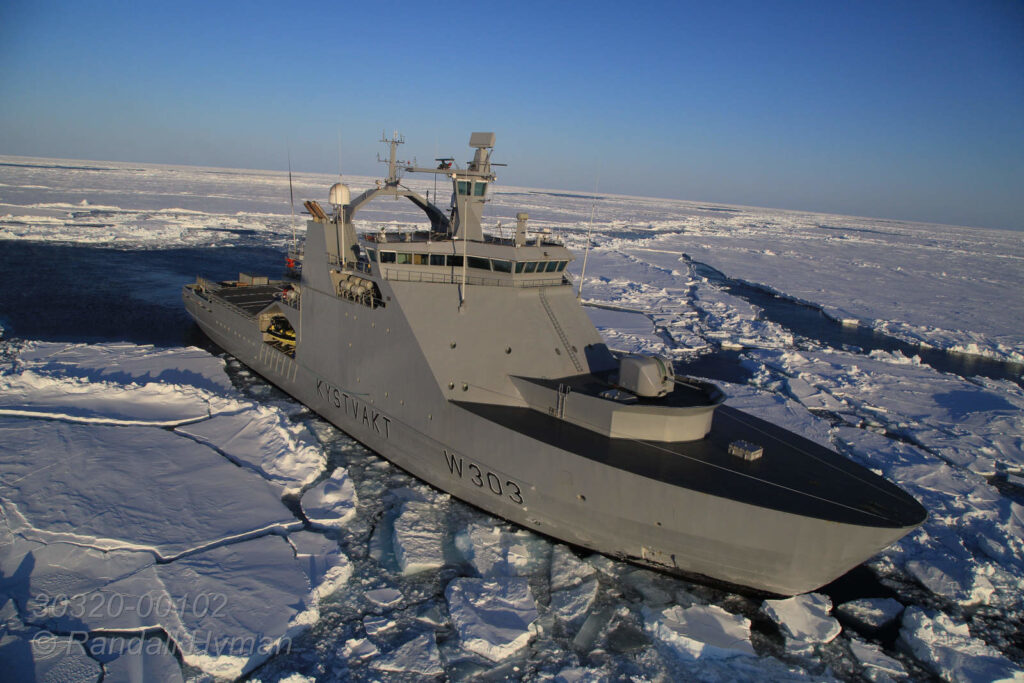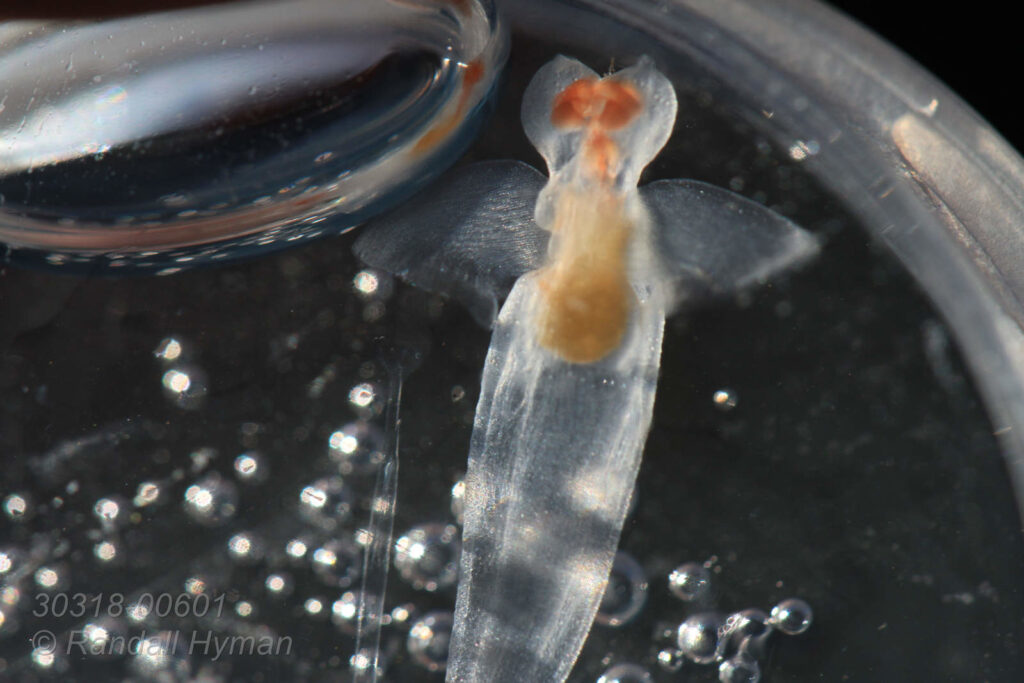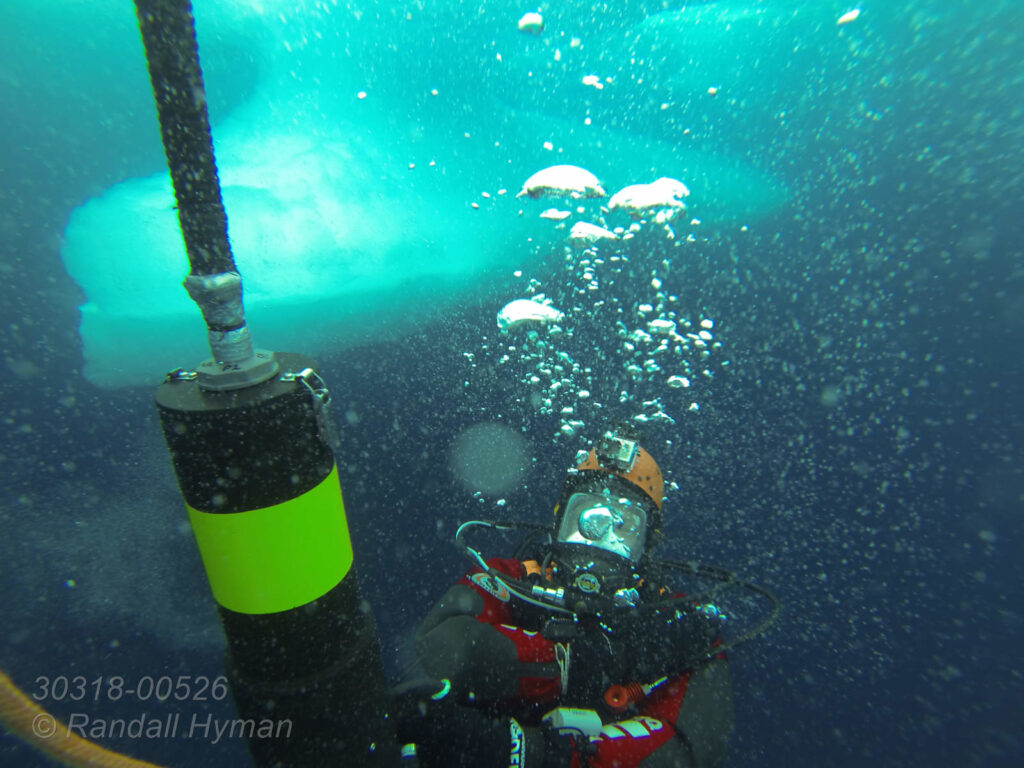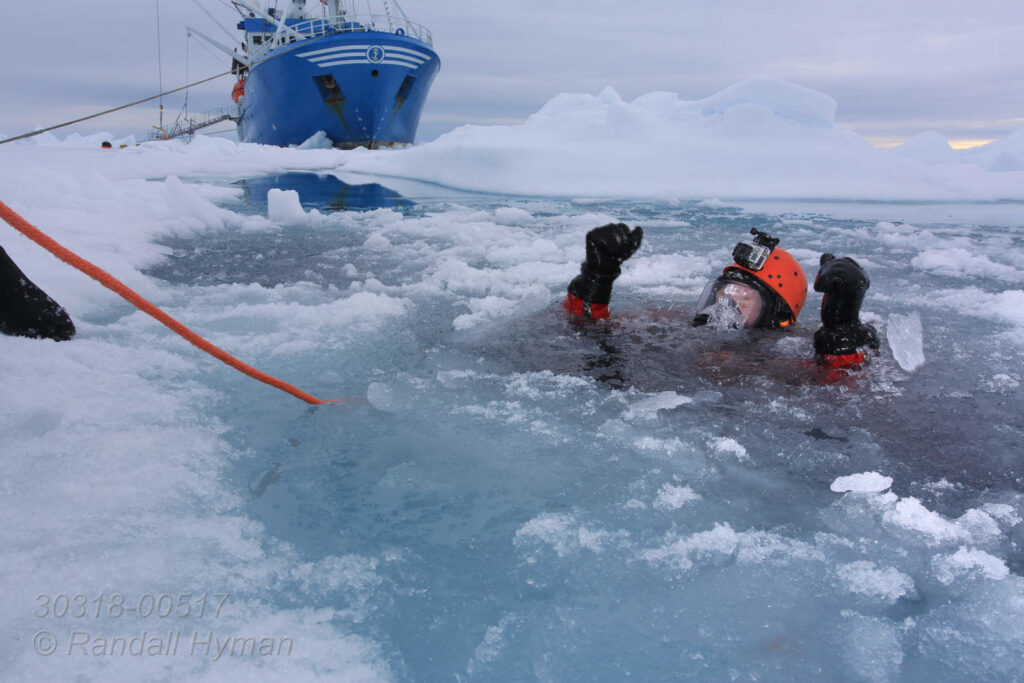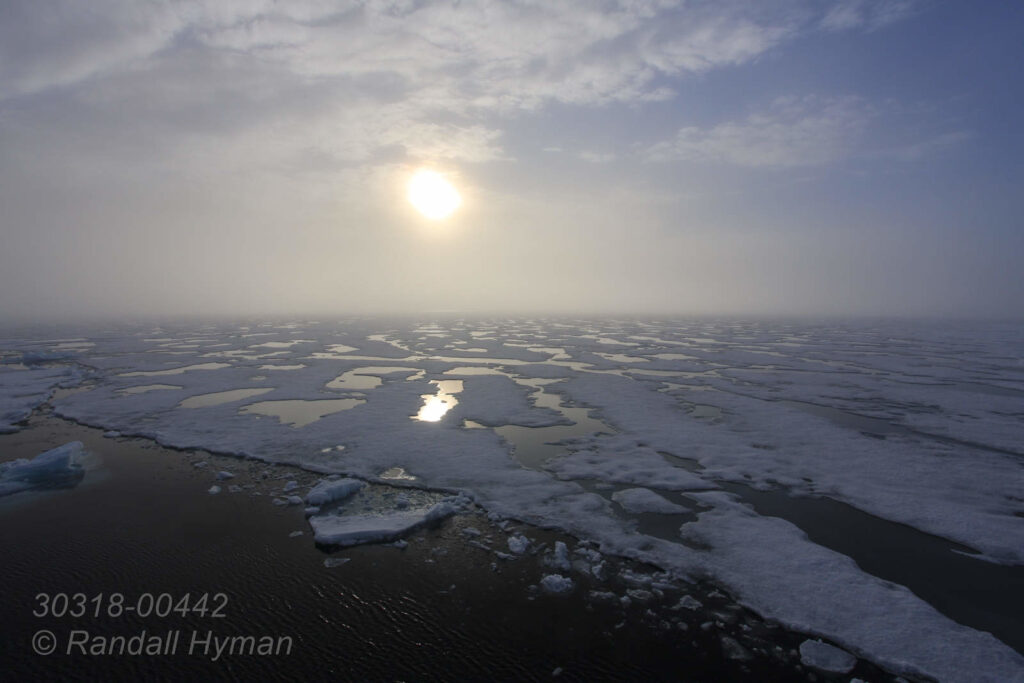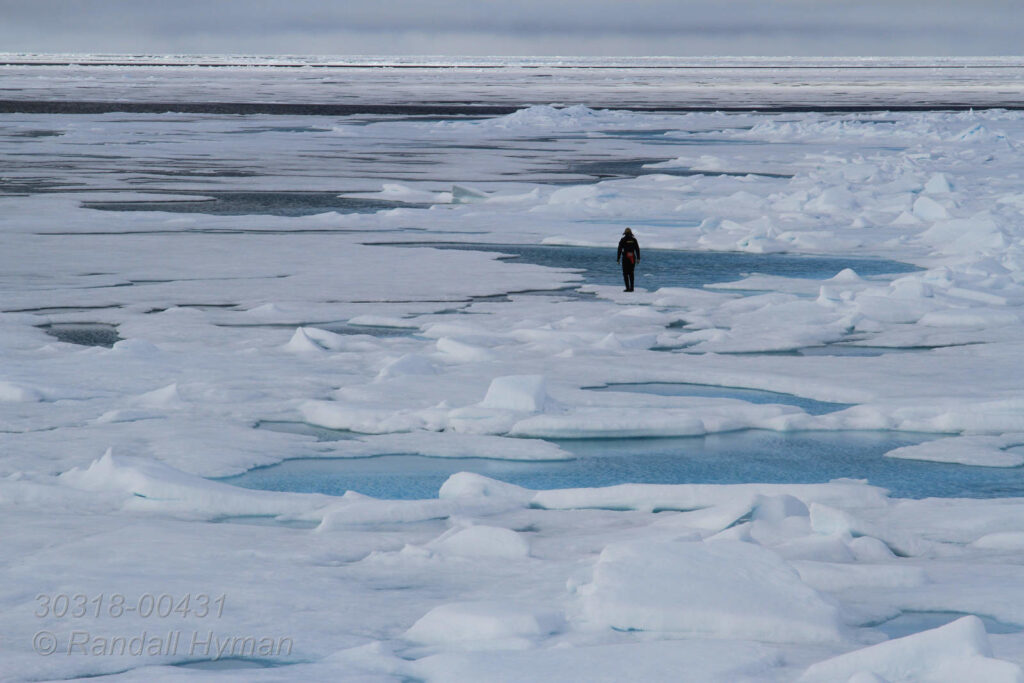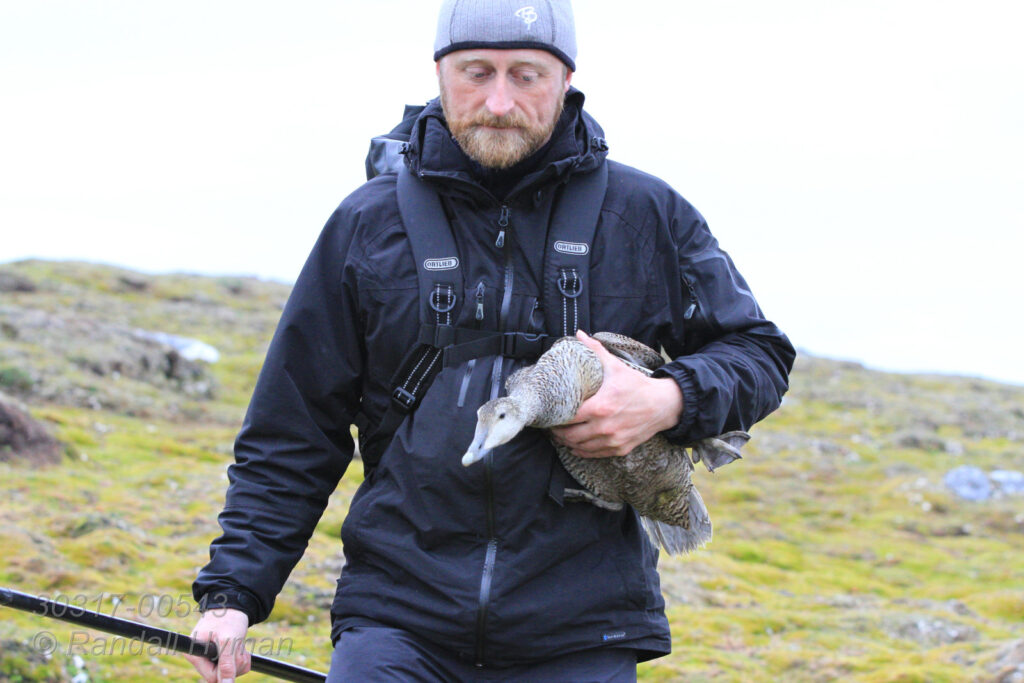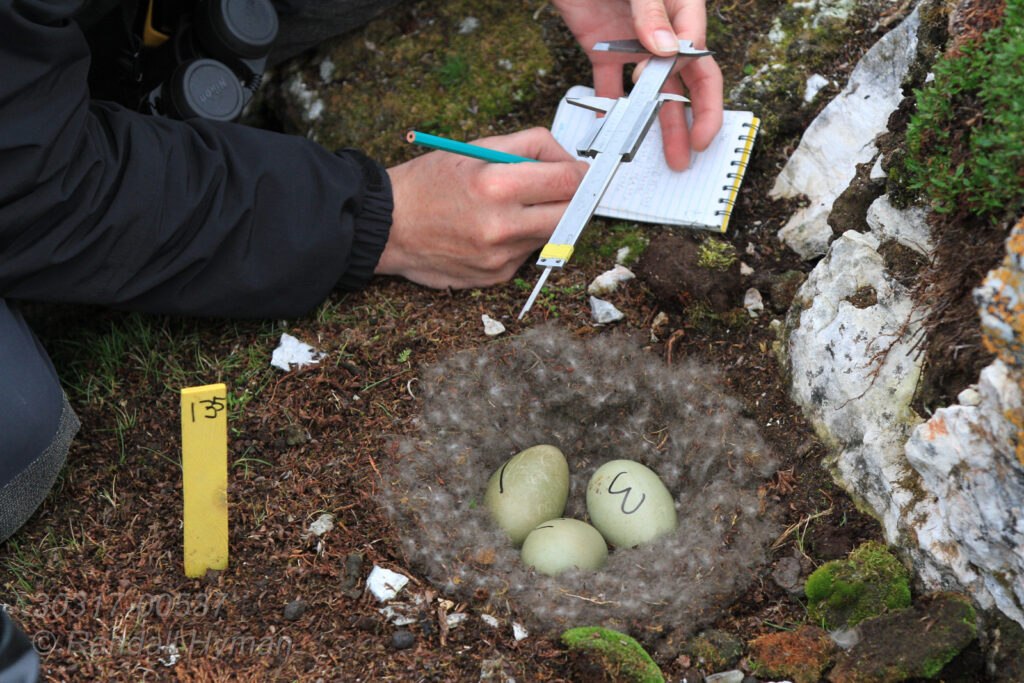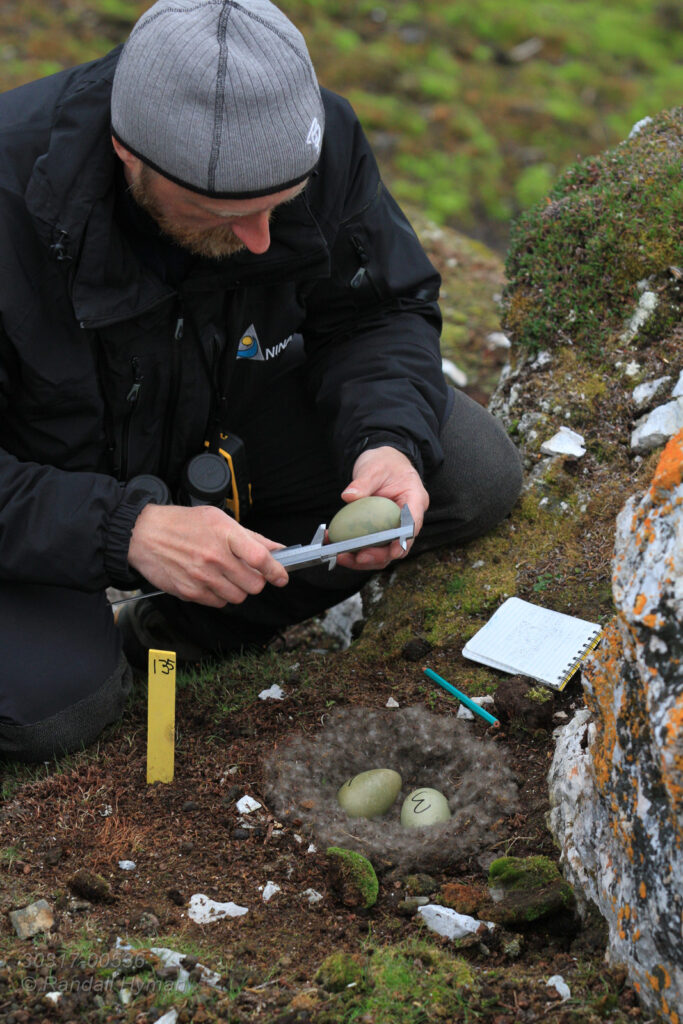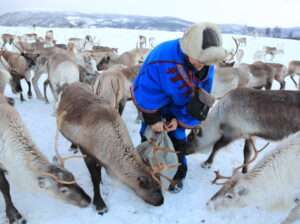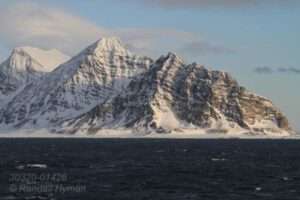
“What you are looking at,” lamented marine biologist Haakon Hop of the Norwegian Polar Institute, “is the melting of the Arctic Ocean.”
Nearing 82 degrees north latitude aboard the research ship RV Lance in late July 2013, we were just 500 miles shy of the North Pole. Our goal was to find continuous ice and, beneath it, the tiny life that blooms each spring and summer, forming the base of the arctic food chain. The sea ice was fast approaching its annual September period of minimum northern polar coverage, but it had retreated dramatically. We were over 100 miles from Norway’s Svalbard archipelago and had still not encountered the frozen seas that normally stop ships much farther south in summer. But “normal” no longer applies in the Arctic. As summers become longer and hotter, sea ice is receding at unprecedented rates and putting many arctic species at risk, from polar bears to seals to seabirds.
On the underside of the frozen Arctic Ocean, ice algae blooms like a rainforest when intense, 24-hour sunlight returns each spring. Zooplankton and the entire Arctic Ocean food chain depend on this phenomenon, as do humans. These algae, and all of the phytoplankton in the Arctic Ocean, capture vast quantities of carbon dioxide, a climate-warming gas, and produce abundant oxygen. Algae also provide abundant food for the zooplankton that fish, birds and some marine mammals eat, fueling the entire food chain. As this rich zone of life recedes farther from land each year, seabirds, seals and bears are increasingly stressed. Ice provides not only food, but also a platform for breeding, fishing and hunting.
“In 1992 we came to a full stop in the middle of the Barents Sea at 76 degrees north,” Hop recalled. “We hit solid ice and couldn’t go any farther. Now look at it,” he said, gazing from the bridge at the patchy ice floes that stretched to the horizon. The next day, we finally found continuous pack ice, but the waters beneath were devoid of plankton. It would take yet another day of ramming our way deeper into the ice before we found waters teeming with the microscopic life typical of summer at these latitudes.
Since records first began in 1979, satellite imagery has tracked nearly a 50% decline in summertime’s minimum polar ice coverage, a yardstick for measuring the health of arctic seas. Ice minimum hit an all-time low in 2012 and its fourth lowest level ever in 2015. Meanwhile, Canada’s Northwest Passage, once a frozen grave for explorers searching for a northern trade route to the Pacific, saw a cargo ship pass through without the aid of an icebreaker just last year. Climatologists are predicting the North Pole may be free of continuous pack ice by 2030—traversable by kayak if not by cargo ship.
A minimum maximum
Last April, almost two years after witnessing the dramatic ice retreat of 2013, I found myself at nearly the same spot in the Arctic Ocean, this time two months after February’s winter maximum, the lowest, and earliest, ever recorded. Even when sea ice should have been at its greatest annual coverage, it was at a record winter minimum, 9% less than three decades earlier. Once more I was with Lance, or at least beside it, aboard the Norwegian Coast Guard’s icebreaker KV Svalbard. We had plowed our way north from the Svalbard archipelago through solid ice for three days, leading Lance on a very different mission than the one I had last witnessed. This was the third effort since January, as part of the Norwegian Polar Institute’s N-ICE2015 project, to lock the ship in a frozen berth at 83° north, just as the renowned Norwegian explorer Fridtjof Nansen had done 120 years earlier.
Nansen started in summer aboard the Fram and drifted nearly 85 miles farther north than our present position before setting off by ski and dog sled toward the North Pole, leaving his crew to pursue the same mission as Lance: track the natural drift of polar sea ice. While these latitudes were sufficient to trap Fram for three years, Lance barely lasted six weeks before drifting back into open waters.
“It was actually easier in the first two legs to get to 83 north,” Captain Endre Barane said, standing in Svalbard’s sprawling, high-tech bridge. In each of Lance’s previous trips, Svalbard, the largest tonnage ship in the Norwegian armed forces, had led the way. “In January the winds were from the north, pushing the ice out. This trip the winds have been southeasterly, shoving all the ice back to the North Pole. You can see it in the pressure ridges. When we try to move, the ice closes in around us right away.”
For days, the Svalbard crew had endured ramming, scraping and squealing as throbbing engines shook the hull, backing up and surging forward, crashing our 340-foot-long ship through stubborn ice– everyday fare aboard an icebreaker. Now we sat across from Lance in the middle of a vast frozen sea, making final preparations to leave the vessel and its crew marooned for the third time in four months. Before sailing away, I was granted a brief visit and spotted a familiar face from my trip two years earlier, biologist Anette Wold of the Norwegian Polar Institute. It was a happy reunion, and she was excited about the adventure ahead.
“We’re looking forward to seeing the bloom begin,” Wold said. “It’s the other end of the cycle you saw two years ago.” Her team would be looking at the awakening of the ice-based arctic ecosystem plus measuring the flux of heat and greenhouse gases between ice, snow, seawater and the atmosphere.
According to Wold, one of the big surprises so far was the thickness of snow atop the ice. This part of the Arctic is usually dry, but Lance scientists had found twice the snow they expected, as thick as a couple of feet. Extra snow blocks sunlight and delays the annual algal bloom.
“We had hoped that the ship wouldn’t be pushed out of the ice so soon,” Wold added, referring to Lance’s first two attempts “but we were expecting it. Non multi-year ice is more dynamic. It gets pushed around more by winds.”
When assessing the health of the Arctic, a major factor is not just the extent of ice, but how thick and old it is, too. Until relatively recently, the oldest polar sea ice was around 10 years, growing eight or nine feet thick in Siberian seas before drifting westward and being pushed out in the Fram Strait between Norway and Greenland in warmer Atlantic waters. The average polar sea ice is much younger and thinner now, which explains why winter maximums appear much more stable than summer minimums. Thin ice forms quickly as soon winter sets in and provides a deceiving veneer, but four-year-old ice now comprises barely 10% of the polar pack ice, compared to one fourth of the total in the 1980s. Lance’s two abbreviated expeditions highlight how dramatically climate has changed since Nansen’s adventures.
“These open lines of water didn’t exist 20 years ago,” mused one of Svalbard’s officers, Stig Andersen, as we sailed southward through a surprising lake-like break in the ice. We were headed back to Svalbard to rendezvous with polar bear scientists and serve as their base for several days of helicopter sorties.
“The first people to cross the North Pole from Russia to Canada were in 1998,” Andersen said. “They were probably the last who will ever get to do it. The Lance scientists thought they would drift slower and be 13 or 14 weeks, but the ice is drifting faster because it’s thinner. I think that was a surprise for them.”
The thinner sea ice is, the more quickly it melts in warmer years. With less frozen surface to reflect sunlight, the more the open, dark seas absorb solar radiation– and the more the Earth warms. Scientists call the fraction of sunlight reflected back into space, for example by snow and ice, “albedo.” Less ice over water and less snow on land creates a lower albedo and a cycle of warming. Gases like carbon dioxide and methane, called “greenhouse gases,” actually trap solar heat. When albedo is low and greenhouse gases are high, things get hot fast.
Scrambled eggs
Arctic temperatures are currently rising at twice the global average, profoundly disrupting the region’s fragile ecosystems. In a recent paper in Frontiers in Ecology and Evolution that correlates disappearing sea ice with steadily increasing polar bear predation on arctic seabird colonies, Norwegian and Dutch scientists referred to, “the cascading effects of climate change.”
“We are becoming more like bear scientists, and less like bird scientists,” explained one of the paper’s authors, biologist Børge Moe of the Norwegian Institute for Nature Research. His team monitors ground-nesting eider duck colonies on islands near the Ny-Ålesund science base in western Svalbard.
In July 2013, Moe watched in dismay as a polar bear swam ashore and began systematically plundering all of his study nests. When I returned with him two days later, the nests were a mass of trampled feathers, eggshells and crushed ducklings. The bear, which we found on a neighboring island with bloody paws and muzzle, had eaten all the eggs. It was emaciated, looking like a skeleton with a white floor rug thrown over it. With ice gone and little to eat on land, some bears resort to seabird eggs.
Although it was the very first case of predation in Moe’s area, it has been going on for years at sites elsewhere along the Svalbard and Greenland coasts. Dutch biologist Jouke Prop, of the University of Groningen, watched a lifetime of study gobbled up in a few short seasons.
“We really had to get accustomed to this idea,” Prop said. He has been studying nesting eiders, geese and gulls in Svalbard for decades. “Initially the bears were destroying our main object of study– lifetime reproduction of geese. It was a blow for us, but then we realized bears were becoming part of our study in addition to what we did with the geese.”
Svalbard bears number around 3000 in winter, but the permanent local population is only in the hundreds. The rest of the bears are pelagic, roaming and hunting the frozen Arctic Ocean throughout the year. Although Svalbard bears don’t den on pack ice, others populations do, and vanishing ice is a big problem for them. Thirty years ago, two thirds of Alaskan polar bears denned on ice, but by the year 2000 that number had halved. Meanwhile, Svalbard’s local population, once decimated, increased after hunting polar bears was banned in 1973.
According to Prop, a very small number of those bears have learned when and where to return each year for the best meals. Although they are few, their impact is catastrophic. Prop has calculated that a hungry bear can raid fifty nests in just an hour and a half, consuming 200 eggs, akin to a 20-kilogram omelet. After a good nap, it’s back at it just 12 to 16 hours later.
“We had the first predation in 2004,” Prop said, “and, in most of the years since, predation has been really severe. Last year, 2014, there were no chicks at all.”
He predicts that the bears, as they compete with one another for the earliest chance to raid colonies, will eventually arrive during the critical period when birds are just settling in. If that happens, the birds may finally abandon their ancestral breeding colonies.
Bad news bears
When biologist Jon Aars joined us by helicopter aboard Svalbard, he shared a wealth of information about Svalbard bears. As head of the Norwegian Polar Institute’s polar bear program, he has spent many seasons chasing bears, sedating them from helicopters with rifle-fired darts, collecting blood and fat samples and then tagging them with ear loggers and GPS collars. He has caught some of the same bears that are raiding Prop’s study sites and tracked them by GPS satellite telemetry. After Prop filmed one bear whose fluffy cubs were rolling seabird eggs around like tennis balls, Aars discovered that she had swum 17 hours to an outer island and spent the rest of the summer along its west coast facing the open sea. Aars guessed she was probably hunting harbor seal pups on land. If so, she is one of the lucky few that has figured out how to feast on eggs and blubber throughout summer despite the absence of ice.
“Polar bears are not having a bad time here yet, but that doesn’t mean they won’t in the future,” Aars said. “There’s much less sea ice. So far bears are doing quite fine, but if you have a pregnant female at 85 north swimming 500 kilometers to reach traditional denning areas, she may not have enough energy to raise cubs.”
On the last morning of field work, I found myself lying flat on the ice staring eye-level at a bear’s black, wet nose just inches from my own. Sedated by a rifle-fired dart, the bear was half snoring with saliva foaming from its mouth. I expected a strong odor from one of the world´s largest predators, but the icy air and wind carried away any scent. It seemed alert, occasionally blinking and trying to make sense of the unfamiliar scene despite its temporarily-paralyzed muscles.
He was a healthy six-year-old male, but blind in one eye. Its fur looked soft and plush, but with a quick brush of my hand I discovered it was coarse and bristly. Though polar bears are clever and fierce, their lives can be short and harsh, no more than 25 years on average, and fraught with hunger and even fights that result in an occasional blind eye– or worse.
I helped Aars collect a plug of fat from the bear’s rump, a messy, bloody affair, but a necessary indignity for determining its diet. Ringed seal and bearded seal, its two favorite meals, have distinct and very different fatty acids that can be readily identified in the lab. Though bears can go six months without food, living off their own fat reserves, seal blubber is their mainstay. Bearded and ringed seals hunt from ice and look for areas where fish and seafloor prey are most plentiful. That often translates to ice along shore, but in Svalbard that habitat is disappearing.
“The Barents Sea is the fastest changing area [in the Arctic] in sea ice, and modelling predicts faster changes coming,” Aars said, “so it could be very difficult to be a polar bear here. We have always had variability. The difference now is we’re having more bad ice years than good years.”
Other scientists say that the impact of disappearing sea ice on polar bears and seabirds is just the tip of the iceberg. A large number of species are already at risk. Ringed seals, wholly dependent on snow-covered sea ice for digging out birthing dens, have completely abandoned the southwest coast of Svalbard.
“What we’re really in is a sort of transition from an ice-covered ecosystem in these areas to an ice-free ecosystem,” says Andrew Derocher, an arctic ecologist at the University of Alberta who used to run the Norwegian Polar Institute’s polar bear study. He cites killer whales as an example of this transition. It is a species that avoids ice-covered areas but is increasingly showing up in arctic waters that were once frozen year round, preying on seals and even whales.
“Killer whales will do fine,” says Derocher. “They’re going to have a field day. The problem is a lot of species like the narwhal and beluga won’t– that’s not the type of system they evolved to exploit.” In the northern ecology course he teaches, Derocher now omits his standard lecture on the effects of climate change and the future of the Arctic.
“It’s just too depressing,” he says. “It is pretty grim.”
When Moe first observed polar bear predation at his seabird site two years ago, the nearby Ny-Ålesund science base had just measured record high levels of carbon dioxide in the atmosphere at 400ppm, a 40% jump from pre-Industrial Age levels. Some climatologists consider anything above that a tipping point for irreversible climate changes. Indeed, the last time carbon dioxide was that high—three million years ago– seas were 30 feet higher and camels roamed the High North. While governments around the world are beginning to react to what Moe calls “the cascading effects of climate change,” he and his colleagues have been watching an arctic meltdown for decades.
© 2015 Randall Hyman


